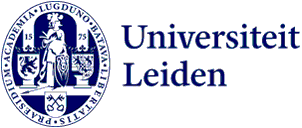
Canal Watch scoops communication prize
Canal Watch (De Grachtwacht), which has been cleaning canals since 2018, has received the Dutch Research Council (NWO) Communication Initiative Award. Founders Auke-Florian Hiemstra and Liselotte Rambonnet are thrilled. ‘The prize isn’t just a pat on the back but also guarantees Canal Watch’s survival.’
The idea for Canal Watch came about after Leidens Ontzet in 2018. Auke-Florian Hiemstra and Liselotte Rambonnet, both students at the time, were shocked by the amount of rubbish, plastic cups especially, in the city centre’s canals. ‘After public holidays, we sometimes found as many as 7,000 cups in 100 meters of canal! That had to change.’
‘After public holidays, we sometimes found as many as 7,000 cups in 100 meters of canal!’
Rather than a quick fix, the two founders wanted to offer a lasting solution. So they focused not only on cleaning up the litter but also on the root cause. They photographed 1,000 plastic cups, piece by piece, and every day that the municipality did not switch to a sustainable alternative, the pair posted one on Instagram, tagging the alderman, the city council and beer brewers in the process.
They also exhibited the photos, collected signatures and spoke to politicians. Thanks to these efforts, Leidens Ontzet 2019 became the first citywide event in the Netherlands to switch to a single type of deposit cup. ‘Ninety-eight point two per cent of the cups were returned’, says Hiemstra. ‘The canal was cleaner than after your average market day.’
Litter and data
Canal Watch operates every Sunday, whatever the weather. A fleet of clean-up canoes, accompanied by a research boat, paddle through the canals. Armed with litter grabbers, the volunteers remove about 15 bags of litter from the water each week. ‘We don’t just collect waste’, Rambonnet explains, ‘but data too.’ The litter has only been in the canal for a short while, so it is often easy to find out where it came from. ‘You get typical market waste such as flower foil, polystyrene trays from the fishmonger and plastic bags with the name of a stall on them. If you know where it comes from, you can address the problem in a more targeted way.’
Their volunteer project was given a boost when they won a prize during Leiden University’s 444th anniversary celebrations that allowed them do citizen science research into plastic in Leiden’s canals.
A museum in a bridge control cabin
The most extraordinary finds end up in the windows of their canal museum, a bridge control cabin on the Mare bridge in Leiden. Here people learn about plastic pollution and why its prevention is important: because of the wildlife in the canals.
Hiemstra and Rambonnet, both PhD candidates at Leiden University who also work at Naturalis Biodiversity Center, study the impact of plastic pollution on nature in their daily lives. Although Canal Watch was not originally part of their research, the project does help them stay optimistic. ‘By throwing ourselves into this, we are dealing not only with the problem but also the solution.’
‘Most of the waste in the sea comes from freshwater bodies such as canals and rivers.’
The clean-ups have also proved to be an important source of inspiration for new scientific research. ‘When we think of plastic soup, we immediately think of the oceans and sad-looking turtles with straws up their noses, but most of the waste there comes from freshwater bodies such as canals and rivers’, says Hiemstra. ‘We still know very little about the impact of this plastic closer to home, on life here in canals.’
That it can be harmful is certain. The Canal Watch collection includes a duck that died after getting a plastic ring stuck around its head that prevented it from flying and eating. ‘That’s terribly sad, of course’, says Rambonnet, ‘but by having it stuffed and put on display, you can tell a good story: pick up just one piece of plastic and you can already prevent a lot of suffering.’
Due to the selected cookie settings, we cannot show this video here.
Watch the video on the original website orInternational fame
One particular find led to a major scientific publication in a biology journal and was picked up by international media such as CNN, The Guardian and National Geographic: a perch entangled in a disposable glove. This victim led to the first scientific study of the impact of Covid waste on animals. The photo of the perch was later nominated for the Natural History Museum in London’s prestigious Wildlife Photographer of the Year prize. So as a local initiative, Canal Watch has a global impact.
Looking to the future
The Communication Initiative Award is a prize for researchers who use effective communication to bring their research close to a wider audience. The award comes with 50,000 euros in prize money. ‘That’s more than welcome’, says Hiemstra. ‘Canal Watch currently runs solely on donations. This prize will ensure that we can continue our mission!’
The two founders are especially proud that more than a thousand volunteers have already taken to a canoe with a litter grabber. ‘It gives us hope that there are always locals ready to help out’, says Hiemstra. Rambonnet agrees, ‘We could never have pulled this off without all of our committed volunteers. Winning this award means that we will be able to continue to clean up, research, address the root cause and tell stories in the years to come.’
Photo: Auke-Florian Hiemstra
